How did a pet foods company, Chewy, has set the record for the biggest ecommerce acquisition ever at $3.3 BILLION dollars?
What makes them unique?
How did they achieve that?
How did they avoid the fate of pets.com?
The strategy behind Chewy’s success is so simple, according to co-founder Ryan Cohen: customer obsession.
Bring the personal rapport you’d have with your neighborhood pet supplier to online world and scale rapidly.
The good news though is that it is a strategy that can be replicated by any company, regardless of product, service, business model or vertical.
The Background
Ryan Cohen founded Chewy in 2011 at the age of 25. He’d had success as an affiliate marketer. He says, “own the entire customer experience and were looking for big categories that were underpenetrated.”
He and his co-founder Michael Day started down the path of jewelry, even investing a few hundred thousand dollars in inventory. Just a few weeks before launching the jewelry business, he and Day pivoted to pet food when he realized that he was far more passionate about his own dog.
Fast forward to 2017 and Chewy sells to PetSmart for $3.35 Billion dollars, and the company goes public in 2019.
There are 3 strategies that are the foundation of the business that you can apply today:
- Wow The Customer
- Share Product Expertise
- Constantly Gather Feedback
Lesson #1: Create An Unparalleled Customer Experience
Pet owners love their pets. Many consider them part of the family. And they share stories, photos, and updates from their pets on social media.
This is the foundation for a powerful flywheel of customer loyalty, referral, and building a brand: customers have an amazing experience with Chewy, build a relationship with the brand, and share and recommend on social.
At the core of this is a deep empathy for customers. Chewy understands that pet owners see their pets as a family member. People share photos and stories of their pets on social media with the same pride and joy that parents share snippets of their children’s lives.
“We train our agents to actively listen and tap into their empathy. If the customer mentions a wedding, we send a wedding present. Our customer service agents are trained to delight the customer. We’re not optimizing customer service to save money,” says VP of Customer Service, Kelli Durkin.
Every new customers receive handwritten notes with their first orders:
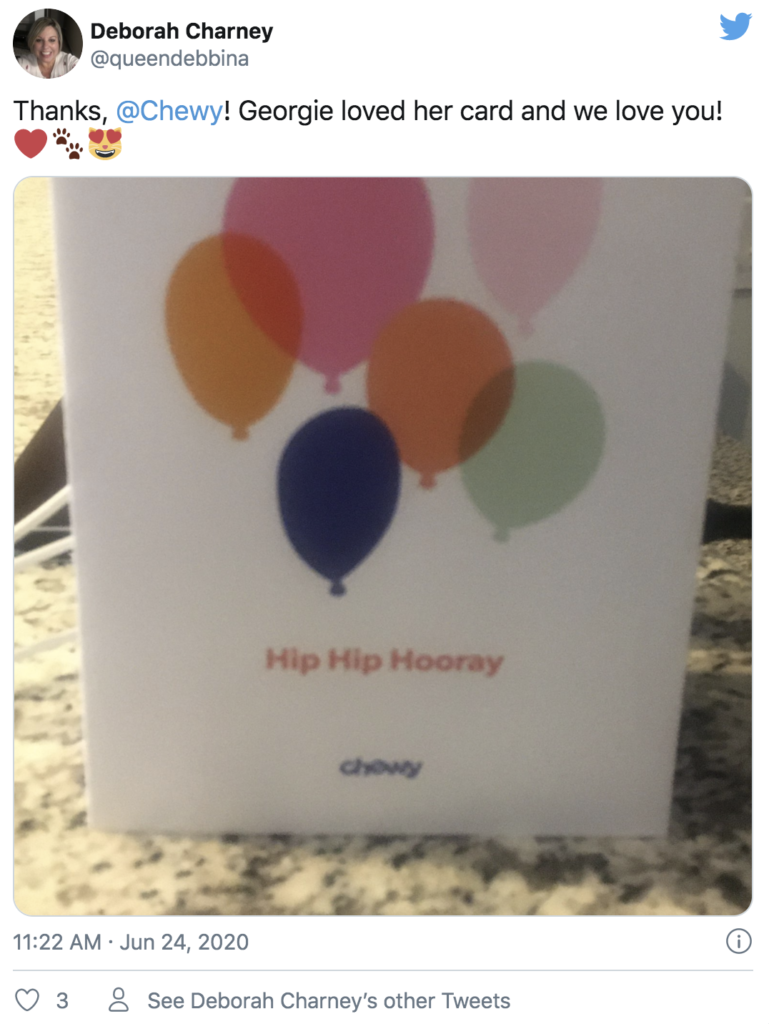
Chewy has a staff of artists to paint portraits of the animals and share with owners:

And when a pet passes away, Chewy sends flowers and a handwritten note:
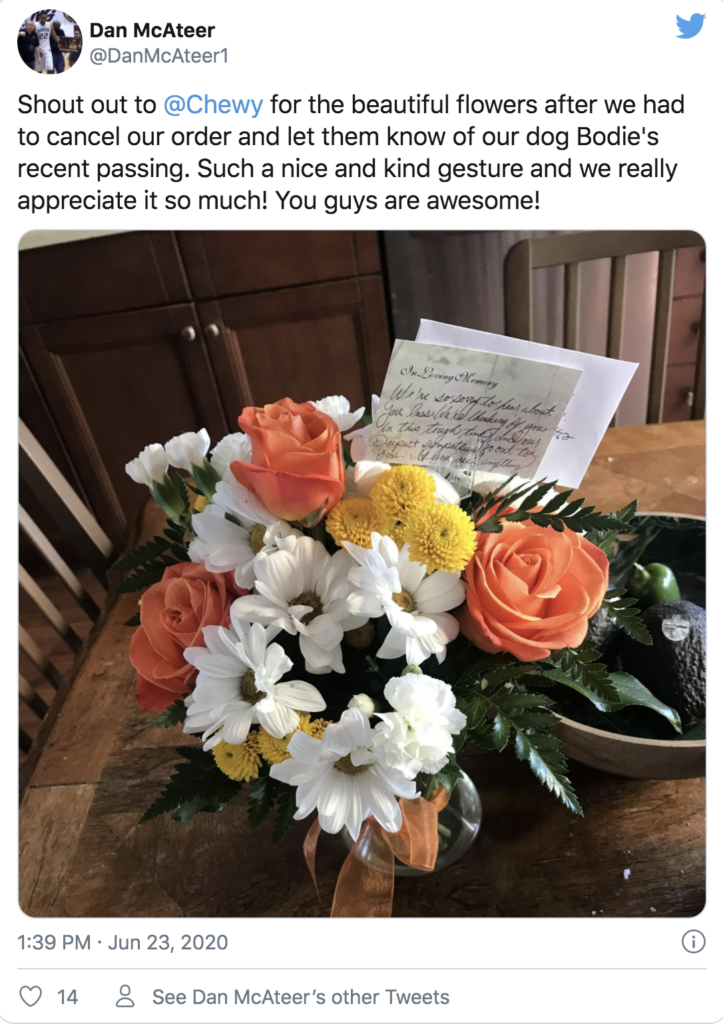
Have you ever seen gestures like this from a company? I have not.
These are just a few of the unique ways that Chewy builds a real relationship with customers. And this drives customer loyalty that lasts a lifetime.
Co-founder Ryan Cohen notes, ““E-commerce can feel like a series of faceless transactions; we wanted to recreate that feeling I used to enjoy at the pet store, shopping with a pet parent I trusted. And we did that at scale, which is hard, but we stayed focused.”
Chewy has an obscenely high 4.9/5.0 stars and over half a million reviews on Google! These reviews are overwhelmingly positive, and demonstrate that the customer-obsession, and personalized approach of Chewy actually works.
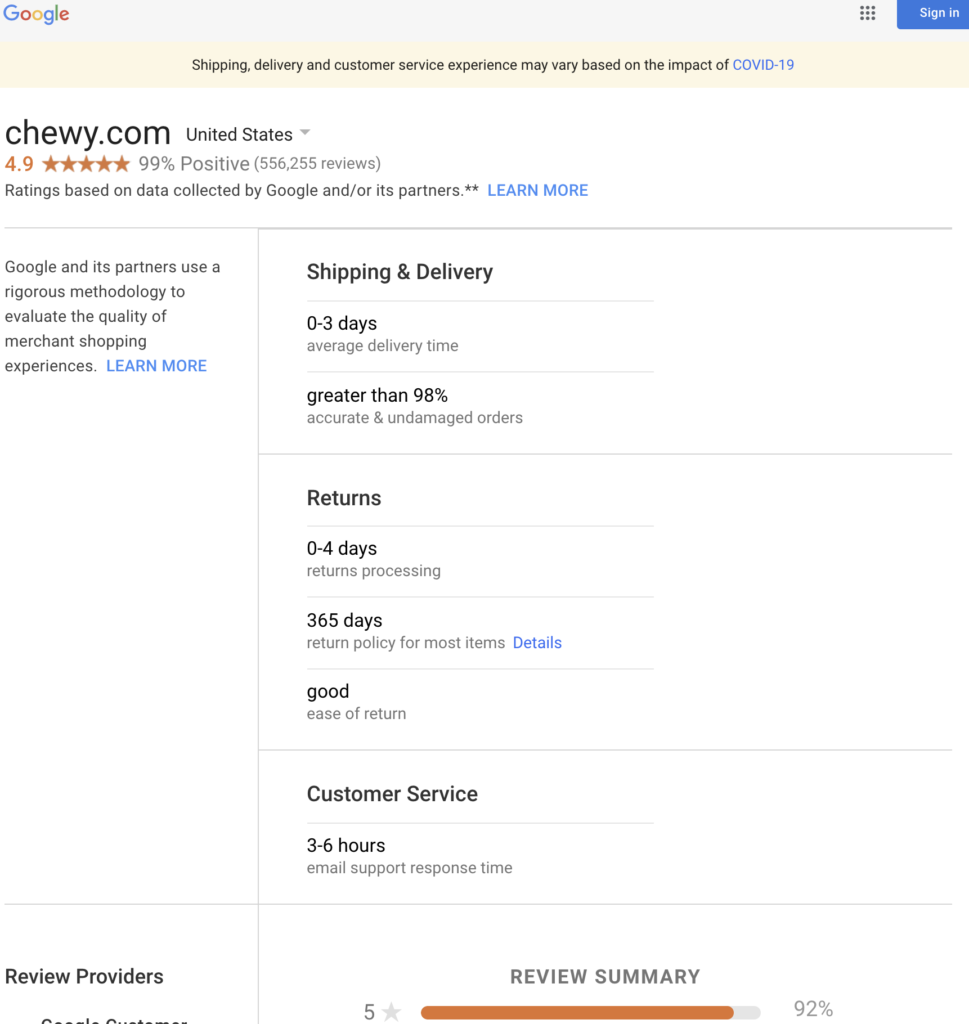
This is just a tiny snapshot of their reviews, but mentions of the customer service and support are a common thread to the satisfied reviews:

When 93% of consumers say online reviews impact their purchasing decision, the impact of these reviews on driving customer purchases can not be ignored.
These reviews build tremendous social proof, trust, and credibility. And when the customer experiences unique touches during their purchase process, they more than likely become an advocate as they post about the experience on their own social media fed.
The spirit of “wowing the customer” is deeply ingrained in the culture. 24/7, phone, email, chat and social, Chewy’s customer service approach is a key differentiator and flywheel.
Takeaway: Treat customer support as an opportunity to create customer happiness. Delighting customers is not a cost-center, but instead a way to create a lifelong customer and advocate.
Lesson #2: Be A Product Expert
When launching Chewy, Cohen took on the daunting task of competing against Amazon.
However, where Amazon had the advantages of free shipping and a huge existing customer base, it also had disadvantages. This became a point of leverage for Chewy.
Amazon could not create a special customer experience.
Amazon did not offer personalized recommendations and product expertise.
Amazon did not understand the emotional bond that pet owners have with their pets.
“I thought if I could deliver the same kind of personalized experience as the neighborhood pet store, but do it online and deliver a really convenient value proposition, that we could build a really big business”, he said.
Taking a look at how Chewy and Amazon merchandise the same product, it becomes clear that Chewy has the opportunity to explain more about the product and its benefits.
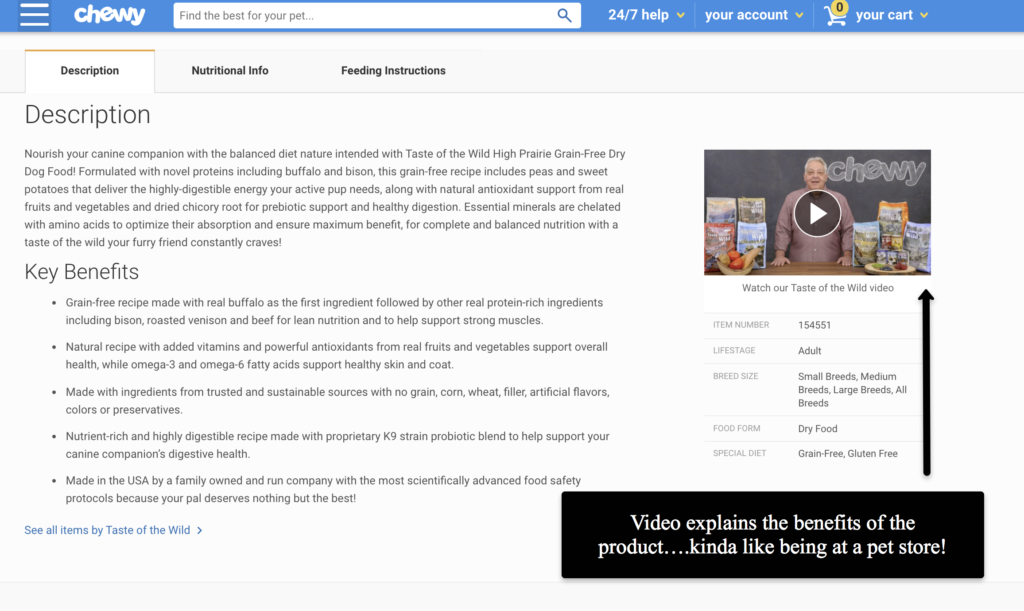
Amazon’s product pages all follow the same structure as any other product on the site, which limits the information about the product and brand.
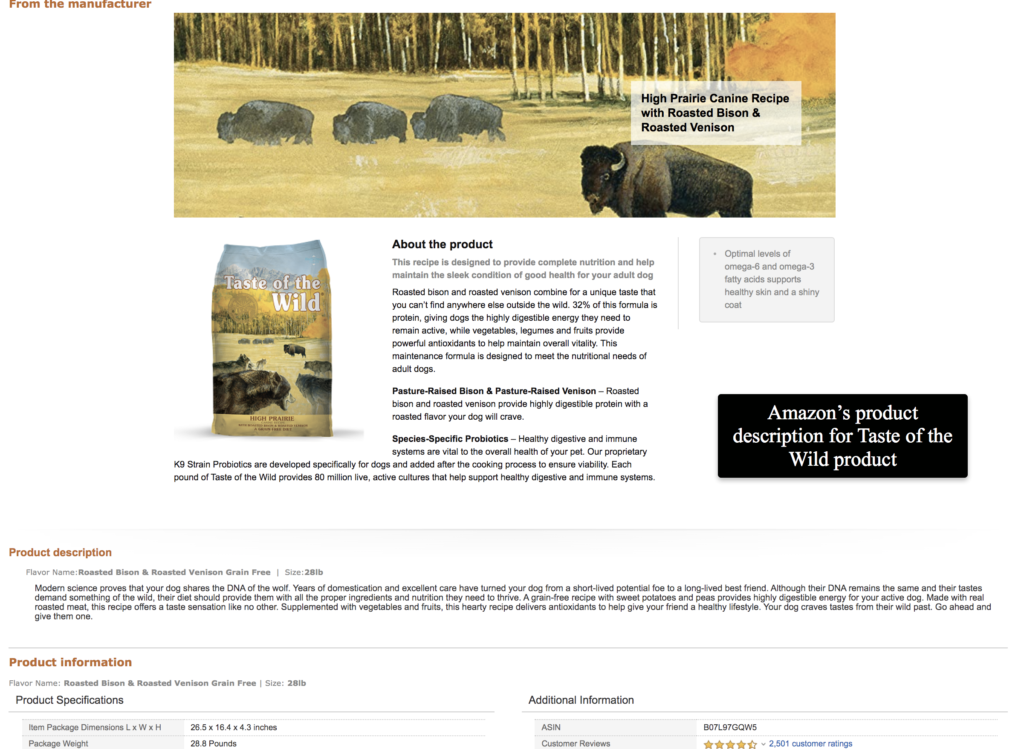
This again comes down to the customer service, and having knowledgeable and caring customer service who were experts at the products they were selling.
Takeaway: Product expertise can help your brand differentiate from competitors. While 24/7 multichannel support is not always financially feasible, you can showcase a library of evergreen content like video, text, and user reviews to explain the product’s benefits.
Lesson #3: Consistently Gather Feedback From All Customers
Chewy relies on Net Promoter Score (NPS) to ensure customer satisfaction.
Chewy sends customers a simple survey after their first order: “How likely are they to recommend Chewy to a friend or family member?”
Those who answer 9-10 are Promoters, 7-8 are Neutral, and 0-6 are Detractors.
Chewy has a dedicated team to address any negative scores, to ensure that those customers feel that their opinions are heard, and improvements are made.
Chewy has built processes to help the support team collaborate and communicate more effectively. So requests that are recurring from multiple customers get addressed.
Takeaway: Prioritize channels of customer feedback, and acknowledge any negative feedback as an opportunity for improving the customer experience. Create operational processes around this so that it is scalable across an organization (Chewy’s Customer Service team is over 1000 people).
Wrapping Up: What Is Your Customer Flywheel?
The success of Chewy is staggering and seemingly unattainable–a multi-billion dollar ecommerce business with thousands of fiercely loyal customers, while competing directly with Amazon.
However, the principals are directly applicable: identify unique ways to bring joy to customers, provide value and product expertise, and never stop improving the customer experience.
Hubspot created a simple flywheel to visualize how their business operates. And just as Chewy has done successfully, everything revolves around the customer:
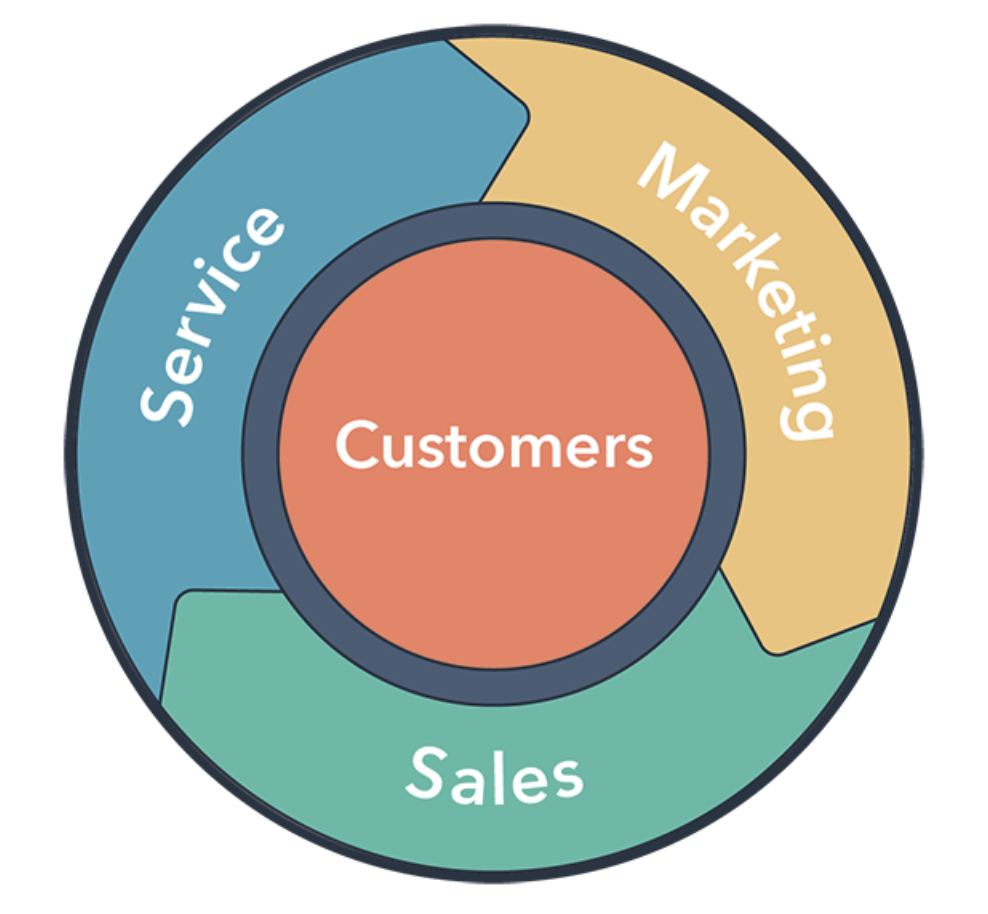
The customer is the driving force behind everything: marketing, sales, service, according to Hubspot: “Every interaction your company has with a customer — from that very first website visit to their latest interaction with a customer service representative — shapes how they view your brand, and ultimately, what they tell the world about you. And your marketing strategy needs to reflect that.”
We are humans. We are built to want a social and emotional connection. And if you, as an ecommerce brand, can build a relationship where there is a real emotional connection with customers, then you have successfully differentiated yourself.
Want a marketing flywheel for your brand?
We’re busy building it now–interactive quizzes to delight your customers with personalized recommendations.
Sign up to get early access!

